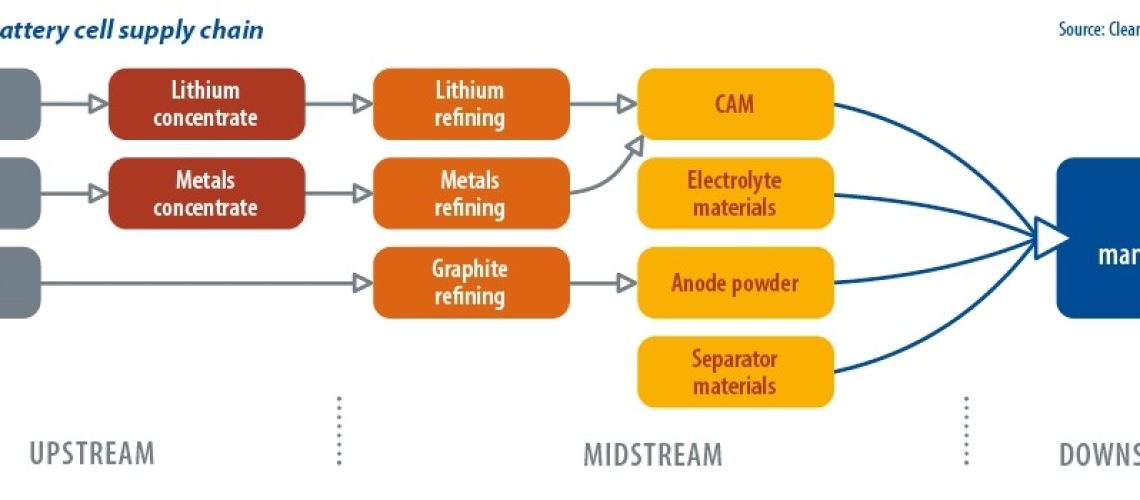As the U.S. Uyghur Forced Labor Prevention Act demonstrated, companies preparing to spend big on batteries are at risk of being blindsided by supply-chain-related legislation. Here are some tips on how US developers can anticipate policy curveballs.
From pv magazine global
Lithium-ion batteries can store energy from intermittent sources such as solar and wind generation, adding critical flexibility to the increasingly dynamic electric grid. But as the storage industry’s future brightens with new freestanding tax credits brought in by the Inflation Reduction Act, so does the spotlight on global battery supply chains.
The PV industry’s experience presents a cautionary tale: A recent report from the Solar Energy Industries Association found tightening trade regulations, designed to address labor concerns in the PV supply chain, contributed to a 23% decline in U.S. solar installations last year compared with 2021.
Policy shifts
An industry can adapt to such shifting policies, but this takes time, especially with so many moving parts. Anticipating and preparing for the future policy landscape, in tandem with the environmental, social, and corporate governance requirements of end customers, will be critical in realizing the storage industry’s full potential.
While trade policies in the solar supply chain center around a single element – silicon – navigating the upstream lithium-ion battery supply chain is an order of magnitude more complicated. In North America, electric vehicle batteries typically use nickel-manganese-cobalt (NMC) chemistry, whereas stationary storage applications commonly use the less energy-dense lithium iron phosphate (LFP) chemistry.
Both NMC and LFP cells consist of many sub-components, such as the cathode, anode, and electrolyte, each of which have their own extensive material supply chains. Critical materials such as graphite, lithium carbonate, copper, and aluminum all require various levels of mining and processing and may pass through multiple countries before winding up in a utility scale storage facility or electric vehicle. Given that complexity, what can buyers do to prepare for greater scrutiny of their supply chain and to pre-emptively improve accountability?
Code of conduct
Potential regulation and growing consumer consciousness are putting increasing responsibility on battery sellers and buyers to build transparency into how, and with whom, they do business. The first step as a buyer is to clearly define corporate social responsibility policies by developing a code of conduct. This should set clear standards for topics such as labor practices, stakeholder engagement, and environmental impact mitigation. An equivalent code of conduct should also be developed for suppliers. By codifying values and company mission upfront, the appropriate tone for conversations with suppliers can be set.
Businesses without a corporate responsibility program to inform the drafting of codes of conduct should create one. This ensures their approved vendor list is limited to suppliers who align with their organization’s values. Two good resources for this are the ISO 26000 guidance on social responsibility, and the guidebook on responsible sourcing drawn up in 2021 by trade body the US Energy Storage Association.
Once a code of conduct is developed, appropriate language should be incorporated into supply agreements. The terms of supply deals should ensure that the code of conduct is applied to the supplier as well as to its entire supply chain, for all components. The language used must be binding and provide clear remedies if sub-suppliers are not compliant. Additional language, ensuring cooperation on other supply-chain related requests – such as facilities access and supply chain mapping – should also be included.
Supply chain mapping
The mapping of a battery supply chain is critical to identify potential risks, as tracing materials to the mine level clearly identifies all participating suppliers. This level of visibility enables buyers to determine which sub-suppliers may bear greater risk of non-compliance with their code of conduct.
The complexity of the battery supply chain and potential resistance of sub-suppliers to sharing this information makes mapping challenging. To ease identification, it will be helpful to initially focus on sub-components which bear more risk or have limited areas of production, and to pay less attention to those materials that are manufactured globally in great quantities, for example copper and aluminum.
Importance of audits
After negotiating for more transparency and access, and mapping the supply chain, it is important to verify that suppliers are indeed compliant with their contractual obligations. On-site processes and supplier qualification procedures should be reviewed and validated to ensure that the buyer’s code of conduct is being implemented in practice, rather than only on paper.
Before sourcing becomes even more complicated, there is a golden opportunity right now to incorporate more accountability into battery supply chains. Taking proactive measures to align purchasing with company values will pay dividends when new policies inevitably take shape.
This may present unique challenges depending on the size of businesses. A smaller company may have a harder time shifting its suppliers’ practices than a larger one. Ideally, coordination on uniform practices will ultimately utilize the industry’s collective bargaining power to push suppliers towards more transparency. The straightforward steps outlined above, meanwhile, can build resiliency to potential policy changes and meet consumer demand for responsible products.
About the authors: Raiene Santana is an associate engineer with CEA. Santana has six years of experience in the solar industry, and supports CEA clients on supply chain traceability and ESG. She previously held roles in energy engineering and international affairs at ENG3 and Solar Energy Industries Association (SEIA), respectively. She holds a master’s degree in energy efficiency from the Federal University of Espirito Santo.
Andreas Savva is an applications engineer, energy storage, with CEA. Savva has five years of experience in battery research and development, including extensive experience with lithium-ion and alkaline zinc battery chemistries. He holds an MS in materials science and engineering from Boise State University and a BS in chemical engineering from NJIT.



